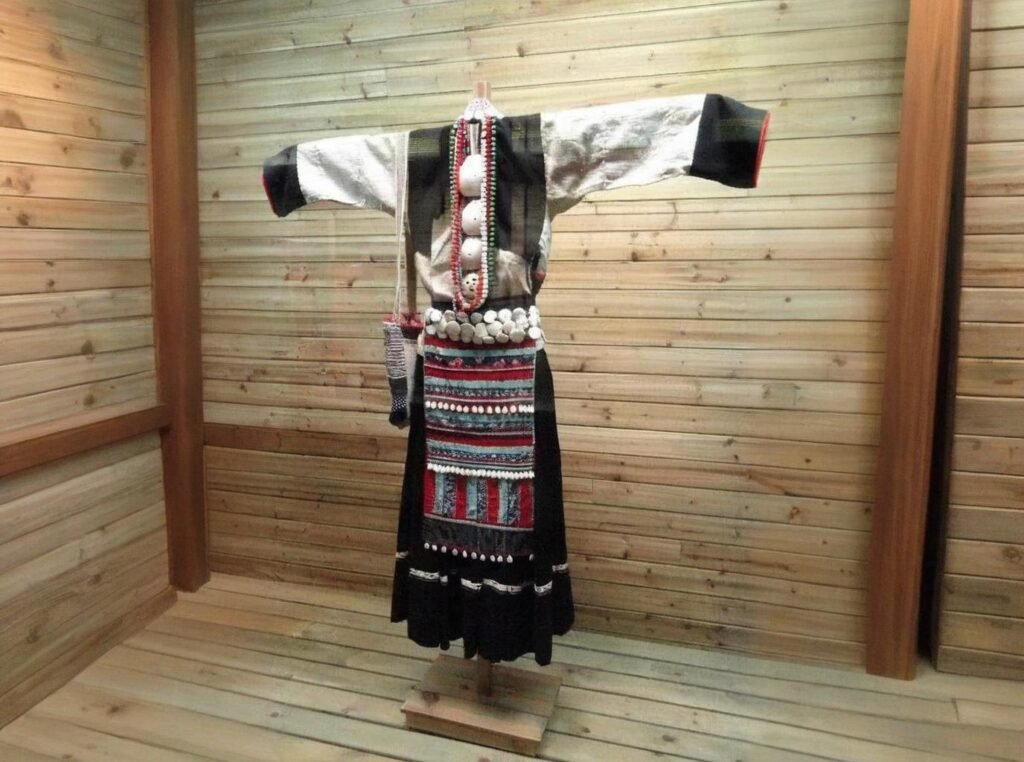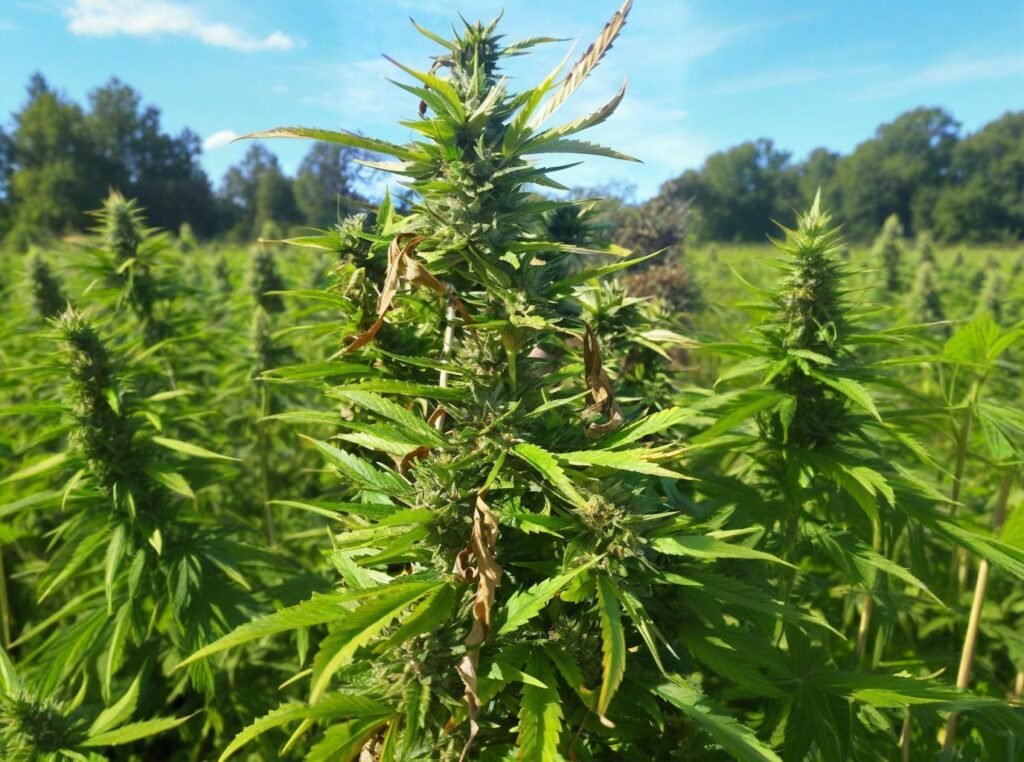
In a world grappling with climate change, water scarcity, and overconsumption, the textile industry faces immense pressure to evolve. Consumers and B2B buyers alike are now demanding eco-friendly materials that are not only biodegradable but also regenerative by nature. Hemp fabric—once overshadowed by mass-market fibers like cotton and polyester—is quickly reclaiming its role as a sustainable champion.
Hemp fabric stands out as the most eco-friendly choice in sustainable textiles due to its low resource consumption, natural biodegradability, carbon sequestration abilities, and versatility across fashion, home, and industrial sectors.
From drastically lower water usage to minimal reliance on pesticides, hemp’s environmental credentials are hard to beat. In fact, more brands today are discovering that hemp offers not just sustainability, but durability, comfort, and performance as well.
In 2023, a small California apparel brand switched to hemp jersey sourced from SzoneierFabrics and reported a 47% reduction in environmental impact per garment based on a third-party LCA. That story—just one of many—is helping shape the future of textile sourcing. But what exactly makes hemp so eco-friendly, and how does it compare to other materials? Let’s dive in.
What Makes Hemp Fabric an Eco-Friendly Material in Modern Textiles?
Hemp fabric is eco-friendly because it requires significantly less water, land, and chemicals than conventional fibers, sequesters carbon dioxide during growth, and biodegrades naturally without leaving microplastics.
Unlike cotton, which demands extensive irrigation and pesticides, or polyester, which relies on fossil fuels, hemp grows with minimal intervention. One hectare of hemp can absorb 15 tons of CO₂, making it a natural carbon sink.
Understanding the Environmental Benefits of Hemp
1. Low Water Use
| Fabric Type | Water Use per KG of Fiber |
|---|---|
| Cotton | \~10,000 liters |
| Polyester | \~125 liters (processing) |
| Hemp | \~300–500 liters |
- Hemp requires up to 95% less water than cotton during cultivation.
- No need for artificial irrigation in many regions.
2. Minimal Chemical Inputs
- Grows without synthetic pesticides or herbicides.
- Natural pest resistance reduces chemical runoff into waterways.
3. Carbon Sequestration
- Hemp absorbs more CO₂ per hectare than most commercial crops.
- A 90-day growth cycle = 1.63 tons of CO₂ offset per acre.
4. Zero-Waste Potential
- Stalks are used for fiber.
- Leaves can be mulched back into the soil.
- Seeds are harvested for oil or protein.
5. Biodegradability
- Hemp decomposes in 6–12 months under composting conditions.
- Leaves no harmful residue, unlike synthetics.
In a 2021 soil trial in Germany, hemp fabric buried in compost returned 84% of its carbon content to the soil within eight months—far outperforming bamboo and rayon.
How Does Hemp Compare to Cotton and Polyester in Sustainability Metrics?

Hemp outperforms both cotton and polyester in sustainability due to its lower water consumption, non-reliance on synthetic inputs, carbon sequestration, and recyclability.
Cotton, while natural, is water- and pesticide-intensive. Polyester, though durable, is made from petrochemicals and sheds microplastics. Hemp strikes the right balance between renewability, durability, and low environmental impact.
Comparative Analysis of Hemp vs Cotton vs Polyester
| Metric | Hemp | Cotton | Polyester |
|---|---|---|---|
| Water Usage | Low | Very High | Low |
| Chemical Pesticides Needed | None/Minimal | High | None |
| Biodegradability | Yes (Fast) | Yes (Slow) | No |
| Microplastics | None | None | Yes |
| Carbon Footprint (kg CO₂/kg) | 1.6–2.0 | 2.6–3.0 | 5.5–9.5 |
| Recyclability | High | Medium | Low |
1. Energy and Emission Data
- Polyester’s production emits nearly 3–5x more GHGs than hemp.
- Cotton needs 2.5% of global farmland but uses 16% of the world’s insecticides.
2. Durability and Lifecycle
- Hemp lasts longer than cotton, reducing replacement cycles.
- It also retains structure and color after multiple washes—key for long-term use.
3. Performance in Real Use
- A U.K. sportswear brand reported a 3x longer garment life cycle when switching from cotton to hemp-blend activewear in 2022.
- Reduced returns due to better durability translated to 22% less shipping-related emissions.
Which Industries Are Leading the Shift Toward Hemp-Based Textiles?
The fashion, home textiles, automotive, and hospitality industries are leading the shift toward hemp-based textiles, driven by ESG targets, carbon reduction mandates, and increasing consumer demand for sustainable alternatives.
From luxury brands to utility-based markets, hemp’s versatility makes it ideal for diverse applications. Major players are adopting hemp for everything from denim jeans and upholstery to curtains and vehicle interiors.
Sector-Specific Adoption of Hemp Fabric
1. Fashion and Apparel
- Brands like Patagonia, Levi’s, and Outerknown have released hemp denim, t-shirts, and blend fabrics.
- Hemp offers a natural texture, UV resistance, and moisture-wicking—ideal for activewear and outdoor brands.
| Brand | Product Example | % Hemp Content | Year Launched |
|---|---|---|---|
| Levi’s | Hemp-Cotton Jeans | 30% | 2019 |
| Patagonia | Men’s Lightweight Tee | 55% | 2021 |
| Stella McCartney | Hemp Suit Collection | 70% | 2023 |
2. Home Textiles
- Hemp is becoming a preferred option for bedsheets, curtains, sofa covers, and towels.
- The hospitality industry values its antibacterial and hypoallergenic nature.
A hotel group in Sweden swapped 40% of its room linens to hemp-cotton blends. Over two years, they reported 26% fewer replacements, cutting textile waste and procurement costs significantly.
3. Automotive Industry
- BMW and Mercedes-Benz use hemp-reinforced panels in their door linings and dashboard composites.
- Hemp fibers offer strength without adding weight—improving fuel efficiency.
4. Industrial Textiles
- Used in geotextiles, ropes, sails, and canvases.
- Hemp’s natural rot resistance makes it excellent for marine and outdoor use.
5. Sustainability-Driven Startups
- Startups like Tentree, Jungmaven, and Hempy’s use hemp as a cornerstone material.
- Small brands benefit from hemp’s story-driven value in marketing and fundraising.
Is Hemp Fabric Biodegradable and Safe for the Environment?

Yes, hemp fabric is biodegradable, compostable, and safe for the environment. It breaks down completely within months, leaving no toxic residues or microplastics behind.
Unlike synthetic fibers such as polyester or acrylic, hemp returns to the earth naturally—releasing nutrients back into the soil during decomposition.
How Hemp Breaks Down in Real Conditions
1. Biodegradation Timeline
| Environment | Breakdown Time (100% Hemp) |
|---|---|
| Compost (Hot, Aerobic) | 3–6 months |
| Soil (Cool, Moist) | 6–12 months |
| Landfill (Anaerobic) | 12–24 months |
- Cotton: up to 6–12 months.
- Polyester: 100+ years, plus microplastic pollution.
2. Environmental Impact During Breakdown
- No harmful leachates.
- Rich in lignin and cellulose—decomposes cleanly.
- Returns carbon to the soil if composted properly.
3. Microplastic-Free Material
- Hemp fibers are 100% natural cellulose.
- Lab tests from the University of Ghent in 2020 confirmed zero microplastic residue after controlled degradation of hemp fabric in soil.
4. Safe Dyeing and Finishing
- Hemp holds natural color well, requiring 30–40% less dye than cotton.
- Most dye houses use reactive or plant-based dyes on hemp due to its high absorbency rate.
- Finishing can be eco-enhanced using enzyme softening rather than chemical softeners.
SzoneierFabrics has developed a fully compostable hemp-blend fabric that biodegrades in under 4 months and uses GOTS-approved dyes only.
How Is Hemp Cultivated and Processed to Minimize Environmental Impact?
Hemp cultivation is inherently low-impact, requiring minimal water, no synthetic pesticides, and improving soil health. When processed using eco-friendly retting and mechanical methods, hemp becomes one of the most sustainable fibers available today.
Unlike cotton or rayon, hemp doesn’t deplete ecosystems during its life cycle. In fact, it improves them.
The Full Lifecycle of Sustainable Hemp Processing
1. Sustainable Cultivation Practices
- Low Water Use: Grown rain-fed in most climates.
- No Pesticides: Naturally pest-resistant, reducing pollution.
- Short Growth Cycle: 90–120 days to full harvest.
- Soil Regeneration: Deep roots break up soil and add organic matter.
| Farming Factor | Hemp | Cotton |
|---|---|---|
| Growth Time | \~100 days | \~180 days |
| Irrigation Needed | Very low | High |
| Chemical Inputs | None or organic | High (pesticides) |
| CO₂ Sequestration | 10–15 tons/ha | Negligible |
2. Eco-Friendly Processing Techniques
- Dew Retting (field-based, microbial breakdown) – low energy use.
- Water Retting (natural enzymes in water) – minimal chemical usage.
- Mechanical Decortication – separates fibers without harsh solvents.
Traditional chemical retting (alkaline or acid-based) is now being phased out due to its environmental toll. SzoneierFabrics only uses enzyme-based or mechanical methods in its hemp processing.
3. Closed-Loop Water and Waste Systems
- Advanced mills now reuse >85% of process water.
- Fiber waste can be recycled into bio-composites or insulation.
What Certifications Ensure Hemp Fabrics Meet Global Sustainability Standards?

The most reliable certifications for hemp fabric include GOTS, OEKO-TEX, USDA Organic, EU Organic, and Global Recycled Standard (GRS). These ensure ecological, toxicological, and ethical compliance across the supply chain.
For buyers, verifying a supplier’s certification is critical—not just for compliance, but for brand trust and ESG alignment.
Key Certifications and What They Mean
| Certification | Focus Area | Key Relevance for Hemp |
|---|---|---|
| GOTS | Organic farming, chemical-free dyeing | Ensures true organic hemp |
| OEKO-TEX Standard 100 | Safety of finished textile products | Verifies absence of harmful chemicals |
| USDA Organic | U.S. standard for organically grown crops | Recognizes certified U.S.-sourced hemp |
| EU Organic | Compliance with EU regulations on organic crops | Required for European buyers |
| GRS | Recycled content and chain-of-custody | For recycled hemp blends or trims |
1. Why GOTS Matters
- GOTS-certified hemp means no toxic inputs, verified labor conditions, and traceable sourcing.
- In 2024, over 58% of European textile buyers required GOTS certification in procurement policies.
2. Auditing and Transparency
- Certifications involve multi-stage audits, lab testing, and factory inspections.
- Some include social compliance (e.g., SA8000 standards or Fair Trade) to ensure no child labor or unethical working conditions.
3. How to Verify Certifications
- Ask for scope certificates and batch-level traceability.
- Cross-check with the certifying body (e.g., GOTS or Control Union) on official websites.
SzoneierFabrics maintains GOTS, OEKO-TEX, and EU Organic certifications for all hemp textiles. Buyers can receive digital copies of certifications with their orders.
Do Hemp Textiles Contribute to Lower Carbon Footprints for B2B Buyers?
Yes, hemp textiles can significantly lower the carbon footprint of fashion and textile brands—especially in Scope 3 emissions—thanks to carbon sequestration during cultivation, low-impact processing, and durability that reduces product turnover.
For companies tracking carbon through the GHG Protocol or reporting under ESG frameworks, hemp offers tangible reductions in emissions per garment or yard of fabric.
Quantifying the Carbon Benefits of Hemp
1. Carbon Sequestration During Cultivation
- Hemp absorbs 10–15 tons of CO₂ per hectare in a 100–120 day cycle.
- In comparison, cotton absorbs less than 1.6 tons CO₂ per hectare.
2. Lower Lifecycle Emissions
| Material | Kg CO₂e per Kg Fabric | GHG Category |
|---|---|---|
| Hemp Fabric | 1.7 – 2.1 | Biogenic offset |
| Cotton | 3.0 – 3.6 | High input farming |
| Polyester | 5.5 – 7.0 | Fossil fuel-based |
Textile Exchange, 2023 Material Impact Report
3. Reduced Need for Chemicals and Energy
- Hemp uses 50% less energy in processing compared to polyester.
- Natural pest resistance eliminates emissions from pesticide production.
4. Longer Product Lifespan
- Hemp textiles are highly durable, often lasting 30–40% longer than cotton-based alternatives.
- This reduces replacement cycles, landfill input, and associated production emissions.
5. B2B Carbon Credit Potential
- Brands using verified organic hemp may qualify for voluntary carbon offset programs.
- Especially valuable under Scope 3 emissions reporting, where upstream suppliers play a key role.
How Can Brands Source High-Quality Custom Hemp Fabrics at Low MOQs?

To source premium custom hemp textiles at low MOQs, B2B buyers should partner with specialized manufacturers like SzoneierFabrics that offer flexible production, fast sampling, and free design support.
The growing global demand for hemp fabric has made it easier than ever to find reliable, certified suppliers who support agile, brand-specific development.
Smart Sourcing Strategies for B2B Buyers
1. What to Look for in a Hemp Supplier
- Verified GOTS/OEKO-TEX certifications
- Fast sampling (≤7 days)
- Flexible MOQ options (starting from 50–100 meters)
- Custom weaves, blends, and GSMs
- Transparent pricing and COA (Certificate of Analysis)
2. MOQ Comparison by Supplier Type
| Supplier Type | MOQ Range | Customization Options |
|---|---|---|
| SzoneierFabrics | 50–100 meters | Full (weave, color, label) |
| Large Wholesaler | 500–3000 meters | Limited (stock only) |
| Local Agent | Varies by brand | Dependent on MOQ pools |
3. SzoneierFabrics Advantage
- Free design and fabric matching
- 100% quality assurance
- Global shipping with short lead times (7–15 days)
- Custom labels, dyeing, printing, and coating options
4. Hemp Activewear Brand
A U.S. sustainable activewear brand sourced hemp-lyocell blends through Szoneier at 100-meter MOQ. Within 3 weeks, they received custom-dyed stretch jersey with low-pilling certification and full documentation—cutting their sampling cycle in half.
Ready to Build a Sustainable Brand with Hemp? Partner with SzoneierFabrics Today.
At SzoneierFabrics, we help brands turn their sustainable vision into reality with:
- Custom hemp fabrics
- Low MOQs
- Fast, free sampling
- Global certifications
- End-to-end OEM/ODM services
Whether you’re sourcing for fashion, home decor, or industrial textiles, we provide not just fabric—but a carbon-conscious story you can confidently share with your customers.

